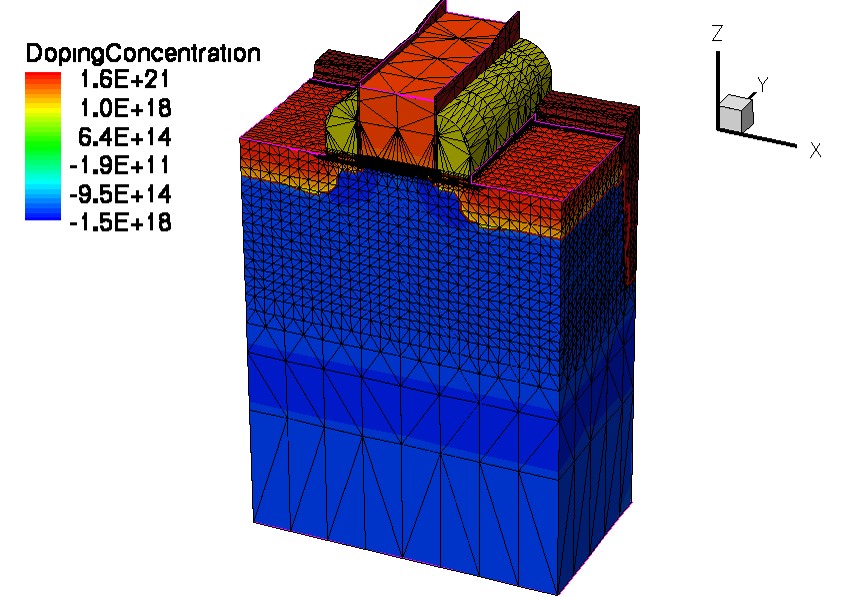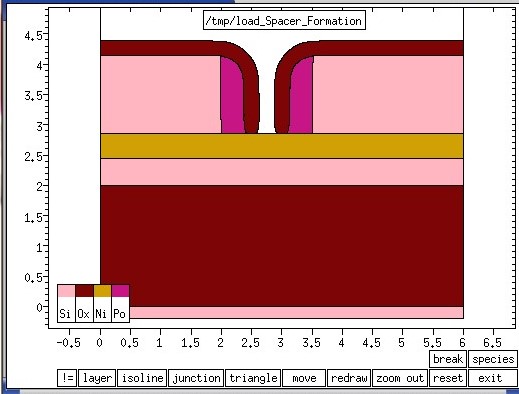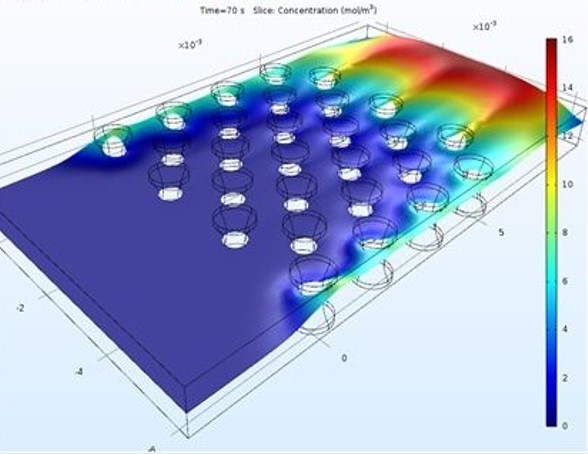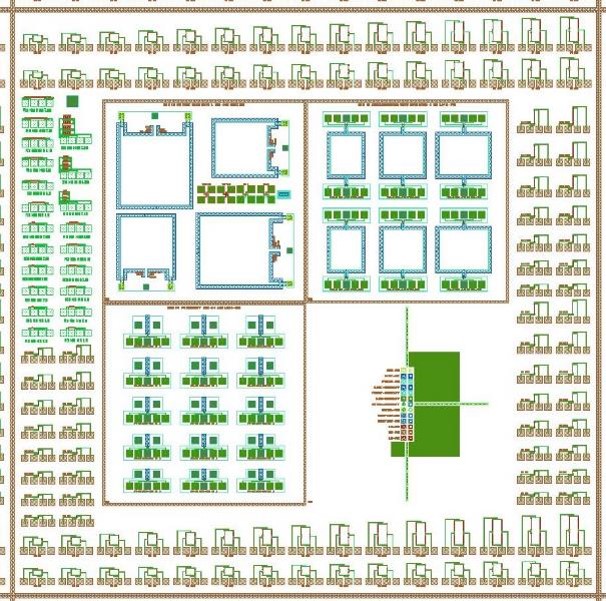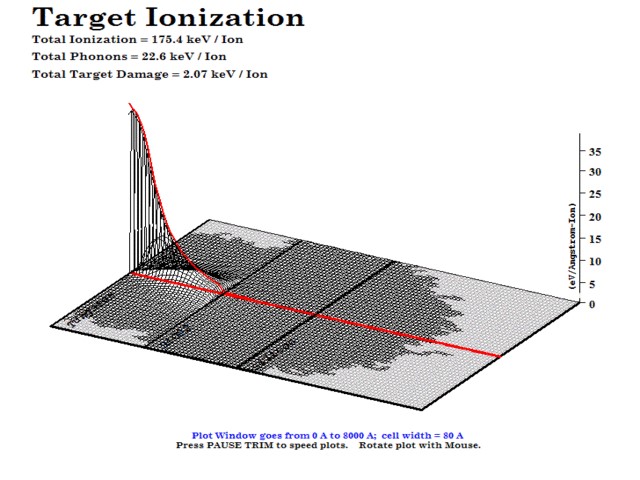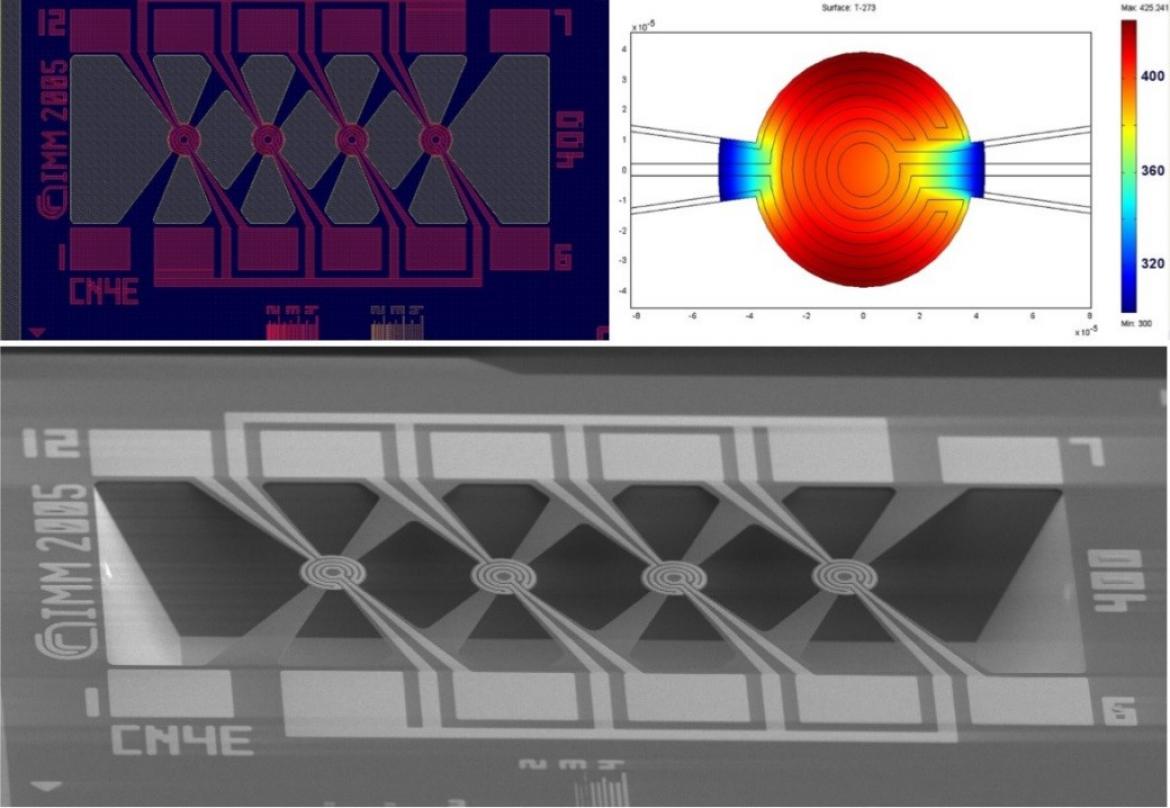
INTRODUCTION
| This facility comprises the design and simulation tools necessary to support the fabrication of microelectronic devices and MEMS. Available software packages include all the steps from the modelling of the devices to the design of the fabrication masks and the definition of the technological process flow. |
| ISE-TCAD DESSIS DEVICE SIMULATION | |
|
|
DESSIS is a multidimensional, electrothermal, mixed mode device and circuit simulator for one-, two-, and three-dimensional semiconductor devices. It incorporates advanced physical models (Drift-diffusion, Thermodynamic, Hydrodynamic, Monte Carlo, and Schrödinger solver) and robust numerical methods for the simulation of semiconductor devices ranging from deep sub-micron silicon MOSFETS to large bipolar power structures (AC, DC, Noise, Transient). In addition, silicon carbide and III–V compounds, and homostructure and heterostructure devices, including nitrides, are fully supported. |
| ISE-TCAD DIOS PROCESS SIMULATION | |
|
|
DIOS is a multi-dimensional process simulator for semiconductor devices. It allows simulations of complete fabrication sequences including etching/deposition, ion implantation and diffusion/oxidation with identical models in one, and two space dimensions. Some of the capabilities are already available in three dimensions. DIOS is a TCAD program with fully automatic meshing through highly adaptive grids without user intervention. In addition to analytical implantation models it includes the 1D and 2D Monte Carlo simulator Crystal-TRIM and an interface to the 3D Monte Carlo simulator MCimpl. Diffusion is simulated on the basis of state-of-the-art point defect models that are calibrated to a large number of experiments. Mechanical effects such as stress, flow and thermal expansion are included |
| COMSOL MULTIPHYSICS | |
|
|
COMSOL Multiphysics is a general-purpose software platform, based on advanced numerical methods, for modeling and simulating physics-based problems |
| LAYOUT MASK DESIGN | |
|
|
CADENCE - VIRTUOSO Virtuoso is a schematic and layout editor software from Cadence FOR MORE INFORMATION VISIT THE CADENCE HOME PAGE |
|
LAYOUT EDITOR General editor for layout designs and schematics in all areas like micro electronics, MEMS, nano electronic. It works internally with the GDSII file format the most common file format in this area and has import/export features to nearly any file format existing in the area. ApplicationsThe applications of the LayoutEditor are very versatile. Here is an overview of the most common applications:
FOR MORE INFORMATION VISIT THE LAYOUT EDITOR HOME PAGE |
|
| IMPLANT SIMULATION - SRIM | |
.gif&imgrefurl=http%3A%2F%2Fwww.srim.org%2FSRIM%2FSRIMLEGL.htm&docid=s-eG_n3SgGrJoM&tbnid=nxXhWRt9_vmayM%3A&vet=10ahUKEwj2y_XUopzcAhXOxaYKHR80DDIQMwg-KAAwAA..i&w=539&h=480&bih=861&biw=1745&q=srim&ved=0ahUKEwj2y_XUopzcAhXOxaYKHR80DDIQMwg-KAAwAA&iact=mrc&uact=8)
|
Stopping and Range of Ions in Matter SRIM is a collection of software packages which calculate many features of the transport of ions in matter. Typical applications include: Ion Stopping and Range in Targets: Most aspects of the energy loss of ions in matter are calculated in SRIM, the Stopping and Range of Ions in Matter. SRIM includes quick calculations which produce tables of stopping powers, range and straggling distributions for any ion at any energy in any elemental target. More elaborate calculations include targets with complex multi-layer configurations. Ion Implantation: Ion beams are used to modify samples by injecting atoms to change the target chemical and electronic properties. The ion beam also causes damage to solid targets by atom displacement. Most of the kinetic effect s associated with the physics of this kind of interactions are found in the SRIM package. Sputtering: The ion beam may knock out target atoms, a process called ion sputtering. The calculation of sputtering, by any ion at any energy, is included in the SRIM package. Ion Transmission: Ion beams can be followed through mixed gas/solid target layers, such as occurs in ionization chambers or in energy degrader blocks used to reduce ion beam energies. Ion Beam Therapy: Ion beams are widely used in medical therapy, especially in radiation oncology. Typical applications are included. REFERENCE: www.srim.org |
FOR MORE INFORMATION VISIT THE THEORETICAL MODELING HOME PAGE
| MICRO/NANO FABRICATION HOME PAGE |


